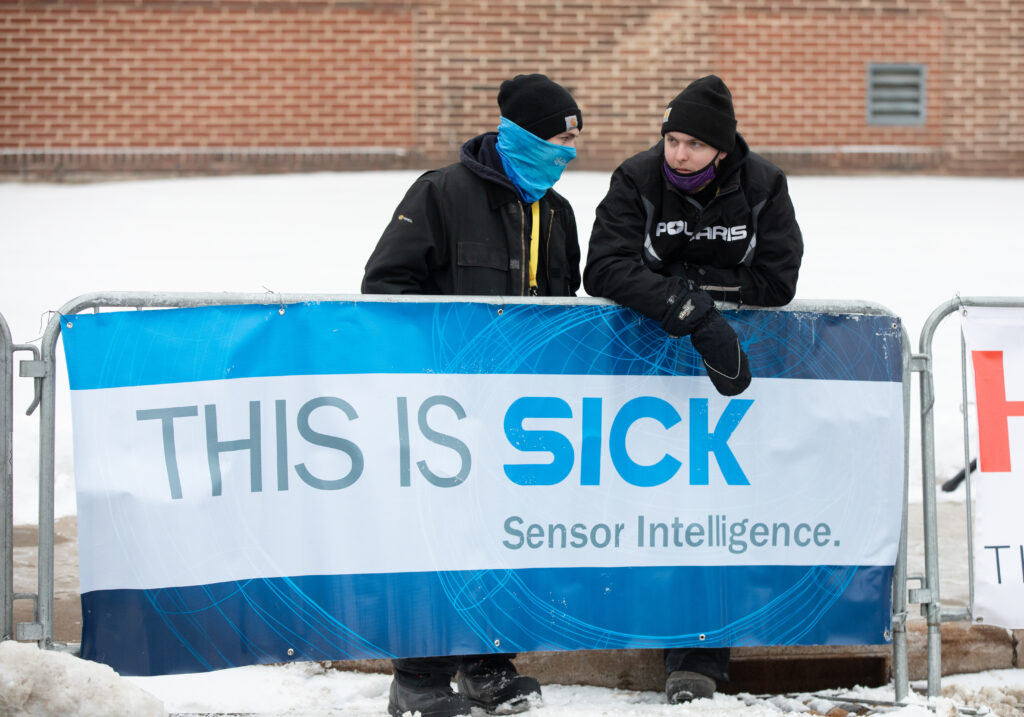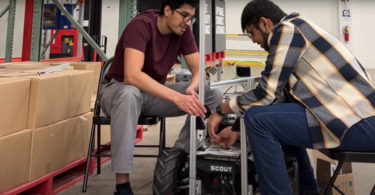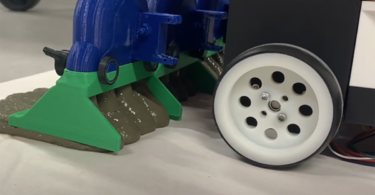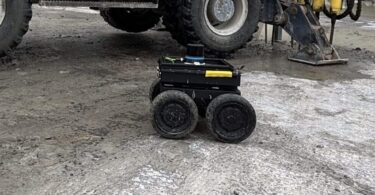Teams near and far put their technical skills to the test during the annual Autonomous Snowplow Competition
This isn’t just any old robot face-off…it’s a face-off of the SNOWbots!
ION has put on the Autonomous Snowplow Competition for the past twelve years, calling all local, national, and even international teams to participate. Whether it be a college team or the general public, the competition has seen a number of snow-laden warriors enter the ring.
Each team designs and assembles their own snowplow with the help of products from many sponsors, SICK being one of them. It must plow a 1-meter x 10-meter strip of snow and avoid an obstacle in the strip in twenty minutes or less. A panel of judges ranks each team based on the snowplow’s ability to plow the snow autonomously (meaning without human intervention), plow without any restarts, navigate around the obstacle, and stay within the allotted boundary.
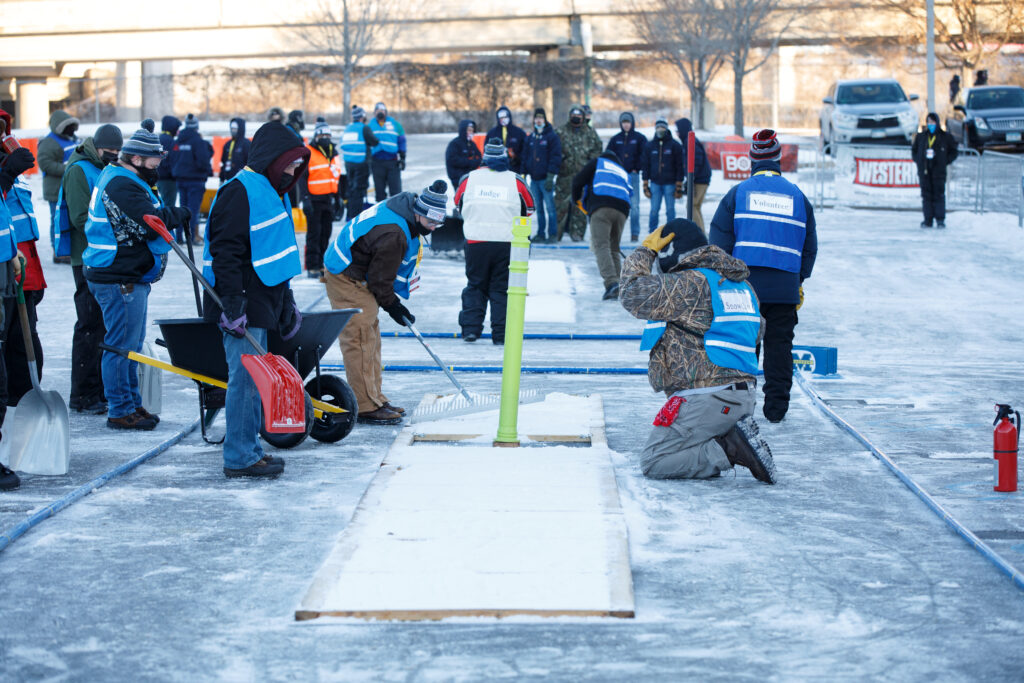
Snow crew preps a 1-meter x 10-meter strip of snow with an obstacle (photo courtesy of Dunwoody College of Technology)
Snowplow names are not a part of the judging process, but monikers like “Frosty the Snowplow” from North Dakota State University and “Snow Problem” from Minnesota State University add whimsical entertainment to the competition.
2022 saw teams from Minnesota, South Dakota, North Dakota, and Ohio. After a virtual event in 2021, teams were ready to rumble in person, even in frigid temps with a feels like temperature of 10° F below zero.
Dunwoody College of Technology, the host of this year’s event, had three teams in the competition—Wendigo, Wechuge, and Snow Devil. Each of these teams has competed in the event for several years, making improvements to their snowplows or even implementing a complete redesign to ready themselves for the competition. Team Wechuge plowed into the snowy ring with the help of SICK’s TiM LiDAR product series.
“The SICK LiDAR has been one of the devices on our plow that I least expect to fail or give us issues even after testing outdoors in 0° F weather,” said Brenden Groff, third-year team member and Dunwoody student.
Groff is pursuing a Bachelor of Science in Automation and Controls Engineering, and also graduated with an Associates of Applied Science in Electronics Engineering a year ago. So how exactly does LiDAR assist in snowplowing, you may ask?
“The LiDAR’s resolution allows our plow to build accurate, detailed, and reliable maps of its surroundings that our plow needs to use and autonomously navigate in. There's even been times where if our algorithm bugs out, I rely on the data from the LiDAR to try and troubleshoot what may have gone wrong,” Groff said.
Wechuge plowed its way to the top three of the competition, beat out only by its fellow university teams—Team Wendigo placed second while Team Snow Devil took home the gold. There may not be a tangible prize for the winner, but the Autonomous Snowplow Competition offers an experience much more valuable than any trophy.
“My favorite part of the competition or process is finally figuring out a solution to a problem that works, that I’m satisfied with, and learning why that solution works. In addition to finally figuring out a solution, I also enjoy learning what other team’s solutions were at the competition,” Groff said.



